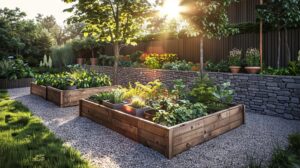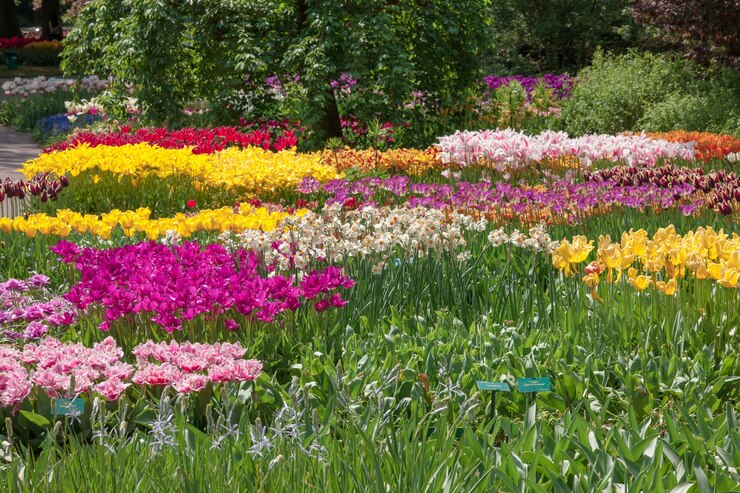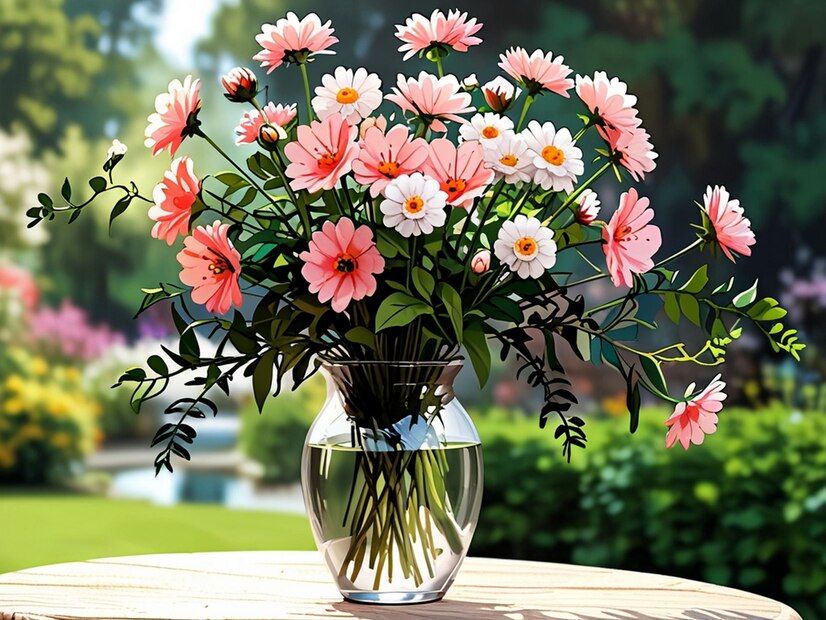
Discover the benefits of square foot gardening and learn how to efficiently maximize your garden space. Explore tips, techniques, and advanced strategies for a successful garden.
Introduction
Square foot gardening has revolutionized how we approach growing our own food, especially in urban and small-space environments. By employing this method, gardeners can efficiently utilize every inch of their available space, making it possible to cultivate a variety of plants in a confined area. The core principle behind square foot gardening is to divide the garden space into square-foot sections, each dedicated to a specific type of plant. This technique not only optimizes space but also simplifies gardening tasks and increases productivity.
Understanding Square Foot Gardening
At its essence, square foot gardening is about maximizing space through organization and efficiency. By breaking down a garden area into small, manageable squares, you create a structured layout that facilitates diverse planting in a compact area. This method is particularly advantageous for those with limited space, such as urban gardeners and apartment dwellers. The concept emerged from the need to make gardening accessible and productive, regardless of the size of the available space.
The Benefits of Square Foot Gardening
Square foot gardening offers numerous advantages, making it a preferred choice for many gardeners. Firstly, it optimizes the use of space by allowing for high-density planting. This means that even small gardens can yield substantial harvests. Additionally, the dense planting reduces the amount of bare soil, which helps in minimizing weed growth and the need for frequent weeding. Moreover, the organized layout simplifies maintenance tasks, making it easier to manage watering, harvesting, and pest control.
Getting Started with Square Foot Gardening
To embark on a square foot gardening journey, start by planning your garden layout. Determine the size of your garden area and the types of plants you wish to grow. You can create your square foot garden in various ways, such as using raised beds, containers, or directly in the soil. Each approach has its own set of benefits and can be chosen based on your specific gardening needs and space availability.

Creating the Grid
Once you have your garden plan in place, the next step is to create a grid that divides the garden area into square-foot sections. This grid can be made using stakes, string, or wooden boards. The grid serves as a visual guide for planting and helps in maintaining the organized structure of your garden. It ensures that each square foot is dedicated to a specific type of plant, facilitating efficient use of space.
Preparing the Soil
A crucial aspect of square foot gardening is soil preparation. For optimal results, use a high-quality soil mix that promotes good drainage and nutrient availability. One popular choice is the Mel’s Mix, which consists of equal parts compost, peat moss, and vermiculite. This mix provides a well-balanced environment for plant growth and helps in maintaining soil health throughout the gardening season.
Planting Your Crops
When it comes to planting, square foot gardening allows for a variety of crops to be grown in close proximity. Follow the recommended planting guidelines for each type of plant, considering factors such as spacing and growth requirements. For example, you might plant one large vegetable like a tomato in one square foot or several smaller plants like radishes in the same space. This flexibility allows you to tailor your garden to suit your preferences and maximize productivity.
Maintaining Your Square Foot Garden
Maintenance is a key aspect of successful square foot gardening. Regular watering is essential to keep your plants healthy and thriving. Additionally, monitor your garden for pests and diseases, and take appropriate measures to address any issues that arise. Adding compost or other nutrients as needed can help maintain soil fertility and support robust plant growth. The organized layout of square foot gardening often results in less maintenance compared to traditional gardening methods.
Choosing Plants for Your Garden
Selecting the right plants for your square foot garden is crucial for achieving a bountiful harvest. Leafy greens like lettuce, spinach, and Swiss chard thrive in smaller spaces and can be planted closely together. Root vegetables such as carrots, radishes, and beets are well-suited for square foot gardening and can be grown efficiently in dedicated squares. Fruiting vegetables like tomatoes, peppers, and cucumbers require more space, so plan accordingly. Herbs such as basil, parsley, and cilantro are excellent choices and can be interplanted with vegetables to maximize space.

Advanced Tips for Square Foot Gardening
For those looking to take their square foot gardening to the next level, consider incorporating advanced techniques. Companion planting is a strategy that involves planting different crops together that benefit each other. For example, marigolds can be planted alongside tomatoes to help deter pests. Vertical gardening is another technique that involves using trellises or vertical structures to grow climbing plants, freeing up ground space for other crops. Succession planting, where you immediately plant a new crop after harvesting one, can further maximize productivity. Additionally, practicing crop rotation helps maintain soil health and reduces the risk of pests and diseases.
Companion Planting in Square Foot Gardening
Companion planting is an effective technique in square foot gardening that enhances plant growth and pest control. By pairing compatible plants together, you can create a more productive and healthier garden. For instance, planting marigolds near tomatoes can help repel harmful insects, while beans can fix nitrogen in the soil, benefiting neighboring plants. Researching which plants work well together and implementing companion planting strategies can lead to a more successful and bountiful garden.
Vertical Gardening for Space Efficiency
Vertical gardening is an innovative approach that allows you to grow plants upward rather than outward. By using trellises, cages, or vertical planters, you can optimize space and increase the variety of plants you can grow. This technique is particularly useful for climbing plants such as cucumbers, beans, and tomatoes. Vertical gardening not only maximizes space but also improves air circulation and sunlight exposure for your plants, leading to healthier growth and higher yields.
Succession Planting for Continuous Harvests
Succession planting is a strategy that involves planting new crops as soon as one crop is harvested. This approach ensures that your garden remains productive throughout the growing season. For example, after harvesting lettuce, you can immediately plant a new batch of greens or another crop in the same square foot. Succession planting helps you make the most of your garden space and provides a continuous supply of fresh produce.
Crop Rotation for Soil Health
Crop rotation is an important practice in square foot gardening that helps maintain soil health and prevent the buildup of pests and diseases. By rotating crops each season, you can reduce the risk of soil depletion and nutrient imbalances. For example, avoid planting the same type of crop in the same square foot year after year. Instead, rotate crops such as leafy greens, root vegetables, and legumes to ensure a balanced and healthy garden.

Troubleshooting Common Issues
Even with careful planning and maintenance, you may encounter issues in your square foot garden. Common problems include pest infestations, diseases, and soil deficiencies. To address these issues, regularly inspect your plants and take preventive measures such as using organic pest control methods and practicing good garden hygiene. If you notice signs of disease or nutrient deficiencies, promptly take corrective actions to minimize damage and ensure the continued health of your garden.
Sustainable Practices in Square Foot Gardening
Sustainability is a key consideration in modern gardening practices. Square foot gardening can be aligned with sustainable principles by using organic methods, conserving water, and minimizing waste. Consider incorporating composting into your gardening routine to recycle organic matter and enrich your soil. Additionally, using rainwater or drip irrigation systems can help conserve water and reduce your environmental impact. By adopting sustainable practices, you can create a more eco-friendly and productive garden.
Square Foot Gardening in Containers
Square foot gardening is highly adaptable and can be effectively practiced in containers, making it suitable for even the smallest of spaces. Container gardening allows you to grow plants on patios, balconies, or windowsills. When using containers, ensure that they have adequate drainage and use a high-quality soil mix. Choose compact varieties of plants or those that thrive in containers, and arrange them according to the principles of square foot gardening to maximize space and productivity.
Seasonal Considerations for Square Foot Gardening
Seasonal changes can impact your square foot garden, so it’s important to plan accordingly. In cooler climates, consider starting seeds indoors or using row covers to extend the growing season. In warmer regions, provide shade for heat-sensitive plants and ensure adequate watering to prevent heat stress. Adjust your planting schedule and garden care practices based on the specific climate and weather conditions in your area to ensure successful gardening throughout the year.
The Role of Mulching in Square Foot Gardening
Mulching is a valuable practice in square foot gardening that helps retain soil moisture, suppress weeds, and regulate soil temperature. Apply a layer of organic mulch, such as straw or wood chips, to the surface of your garden beds. This layer helps conserve moisture and prevents soil erosion while providing a habitat for beneficial microorganisms. Regularly replenish the mulch as needed to maintain its effectiveness and support healthy plant growth.

Harvesting and Enjoying Your Garden
Harvesting is one of the most rewarding aspects of square foot gardening. Regularly check your plants for ripe fruits, vegetables, or herbs, and harvest them at their peak of freshness. Proper harvesting techniques can improve the quality and flavor of your produce. Enjoy the fruits of your labor by incorporating your homegrown vegetables and herbs into delicious meals. Share your harvest with family and friends to celebrate the success of your square foot garden.
Conclusion
Square foot gardening offers a practical and efficient approach to growing a diverse range of plants in a limited space. By dividing your garden into manageable sections and employing advanced techniques like companion planting and vertical gardening, you can optimize your garden’s productivity and enjoy a bountiful harvest. Whether you’re a seasoned gardener or a beginner, square foot gardening provides a flexible and rewarding method for cultivating a thriving garden in any setting.
Read also: how i sleep at night knowing l’m failing all my cl – tymoff





